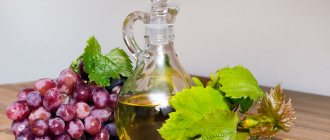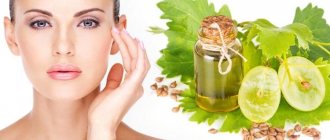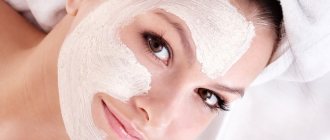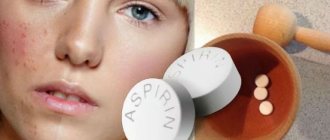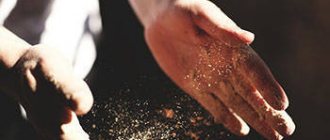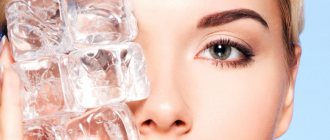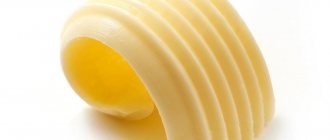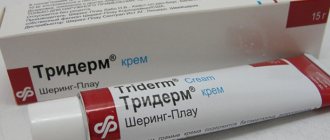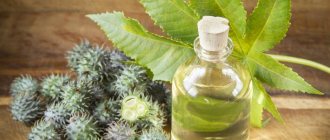Chamomile has been used for facial acne for centuries. It is famous for its anti-inflammatory and antibacterial properties. The medicinal plant normalizes the functioning of the sebaceous glands and tones the skin. It reduces irritation, redness and swelling, and has a relaxing effect on the facial muscles. There are many ways to use chamomile to treat acne. You can prepare products based on it yourself at home. They will not require special skills and will not take much time.
Chamomile normalizes the functioning of the sebaceous glands and tones the skin
The use of pharmaceutical chamomile
Decorative and wildflowers are not suitable for use for medicinal purposes. Only pharmaceutical chamomile is used in various fields of medicine and many areas of industry and the national economy. The medicinal plant is characterized by a strong, unique odor and unusual appearance. Pharmaceutical chamomile is not only found growing wild, it is specially grown on plantations, since its quantity is included in the plans of the pharmaceutical and other industries for the production of medicines and consumer goods.
| Application area | Use of colors |
| Textile industry | Natural dye for wool fabrics |
| Cosmetology | The main component for children's products, creams and lotions |
| Perfume industry | Fragrance component for soap and shampoo |
| Food industry | Flavoring for special types of alcoholic products (sherry) |
| Agriculture | Component of feed for cows |
| Home pest control | Insecticide against small insects on indoor plants |
Chamomile relieves redness. Benefits of chamomile for face and body
Pharmaceutical chamomile has been widely used in folk medicine and home cosmetology for many years, as it has unique medicinal properties. From this plant you can prepare infusions, decoctions, lotions and masks. Chamomile has a lot of useful qualities and properties, which is why it is so popular. This medicinal herb has the following effects on the skin of the face and body:
- Has a regenerating, antiseptic and disinfectant effect.
- Enlarged pores quickly narrow.
- The upper layers of the skin are effectively cleansed.
- The process of sebum production is normalized.
- The skin receives the necessary nutrition and hydration.
- It relieves irritation and inflammation and has a bactericidal effect.
- The healing process of wounds and microtraumas is accelerated, irritated skin is soothed.
- Pigmentation is minimized and has a mild whitening effect.
- Blood circulation in cells is stimulated, all metabolic processes are normalized and improved.
- Puffiness is relieved, dark circles under the eyes are removed.
- It has a tonic and rejuvenating effect on the skin.
- Chamomile reliably protects the skin from the negative effects of ultraviolet rays.
It is thanks to these properties that simple pharmaceutical chamomile is the most popular in the field of cosmetology. The advantages of this plant include the fact that it is hypoallergenic and ideal for daily use. Pharmaceutical chamomile relieves swelling, eliminates irritation, helps in the fight against ulcers and acne, as well as other skin problems.
Use of the plant in medicine
The medicinal properties of the inflorescences are used in the treatment of many diseases, but few people know that the root is also useful. Powder from dry chamomile root is used for diseases of the genitourinary system, nervous disorders, allergic rashes, and acne.
| Chemical component | Effect on the body | Diseases |
| Flavonoids | Anti-inflammatory | acute respiratory infection, sore throat |
| Apiin | Antispasmodic, choleretic | Intestinal diseases, colic, flatulence |
| Organic acids | Diaphoretic, antiseptic | ARVI, flu, sore throat |
| Essential oil | Sedative | Stress, apathy, insomnia |
| Vitamin C, B4 | Tonic | Reduced immunity, seasonal depression |
Chamomile for hair. Using chamomile for hair
The healing properties of chamomile and its beneficial effects on the body have been known since time immemorial. Among other things, it can have a beneficial effect on girls’ hair, which is why it is widely used in hair care. In this article we will take a look at its benefits, properties and various uses that will help you take a fresh look at this amazing flower.
Properties, benefits and harm
Even if you don’t set any special goal for yourself, by rinsing your hair with chamomile, you make your hair healthier; it gently helps protect your hair from the negative factors that affect it every day in a modern metropolis.
Chamomile provides disinfection of the scalp, soothes various irritations, accelerates hair growth, solves the problem of hair loss, and activates blood supply to the hair follicle.
It should be used by those who face frequent hair washing, since the plant normalizes sebum production.
With regular use, you will forget about such an unpleasant phenomenon as dandruff, and the hair itself will become smooth and silky.
Many girls use the plant as a hair coloring agent, as it gently tints gray hairs and slightly lightens natural curls.
Being a natural remedy, chamomile does not cause any harm to the body; the only contraindication is individual intolerance, which is extremely rare.
Inflorescences for acne treatment
The benefits of chamomile in the treatment of acne are undeniable. Acne occurs when the hormonal balance is disturbed - in adolescence, during the decline of reproductive functions, while taking hormonal drugs at any age. Acne usually occurs in places with increased sebum production - on the back, chest, scalp, and in the T-zone of the face.
For acne, it is best to use chamomile internally and externally. An integrated approach increases effectiveness while simultaneously addressing external and internal causes of the disease.
Depending on the area affected by acne and the ability to perform certain treatments on different parts of the body, chamomile for acne on the face and body is used in several forms.
Mechanism of action on the skin
The experience of many generations has proven that chamomile helps against acne due to its wide range of effects. When ingested after external or internal use, a medicinal herb:
- Blocks the activity of bacteria, which reduces inflammation and the infection subsides;
- Relaxes the facial muscles;
- Creates an additional protective mantle that reduces the negative effects of ultraviolet radiation and cold on the skin;
- Launches the process of natural production of collagen and elastin, which increases turgor;
- Stimulates the metabolic process, due to which tissue regeneration occurs faster;
- Activates local blood circulation, due to which the face with acne is more intensely saturated with oxygen and nutrients;
- Lightens, which reduces the pronounced pigmentation remaining after the healing of acne elements;
- The presence of azulene in the composition prevents allergic rashes.
Treatment of acne on the face
Treatment procedures should be started at the first small pimples, without bringing the situation to a critical point, when acne invades new areas of the skin.
Amber tea
1 tbsp. l. Brew dry inflorescences with 1 cup of boiling water, let steep for 20 minutes. You can add 1 tsp. honey Drink 30 minutes before meals. This tea can be drunk hot or cold, as it is delicious in any form. Despite the excellent taste and aroma of tea, you can drink no more than 2 cups a day for a week. Then a break is required for 14 days, after which the course can be repeated. If you are allergic to bee products, honey should not be added.
"Frosty" chamomile
Inflamed, reddened and irritated skin can benefit from rubbing with chamomile ice, which can be made from chamomile decoction. Rubbing increases blood circulation, tones the skin and has a disinfecting and disinfecting effect.
To prepare “frosty” chamomile for the face against acne, just brew a bag of pharmaceutical chamomile with 1/2 cup of boiling water and let it brew for 30 minutes. After this, pour the broth into an ice tray and freeze. You should wipe your face with an ice cube in the morning after washing your face to neutralize the effect of water. After wiping, do not wipe your face, let the healing moisture dry on the skin.
Essential oil "Chamomile"
Medicinal oil can be purchased at the pharmacy, or you can prepare it yourself: 2 tbsp. l. inflorescences pour 1/2 cup of refined (odorless) sunflower oil. Leave for 2 days. Use the oil externally, specifically lubricating large acne nodes with purulent contents, or apply a continuous thin layer to the area of skin affected by acne. Essential oil should not be taken internally when treating acne.
Steam inhalations
Steam inhalation has been successfully used to treat acne for a long time. During steaming, the pores open and cleanse. Hot steam from herbal infusions penetrates into the deep layers of the epidermis, exerting a healing effect on them. It stimulates the sebaceous and sweat glands, causing them to secrete sweat and sebum along with toxins, pathogens and dirt particles. The benefits of inhalation include not only cleansing and treatment, but also saturation of the skin with minerals, vitamins and moisture.
For inhalation, you can use special cosmetic inhalers or breathe steam over a container with an infusion of a medicinal plant. It is best to prepare the infusion in a steam bath. Immediately after preparation, it is poured into a wide container. Then they bend over the container and cover their head with a towel. You need to keep your head above the water at such a distance that the steam does not burn your skin. You need to steam your face for no more than 10-15 minutes. If the procedure causes discomfort, you can end it earlier.
Steam inhalations can dry out the skin
Inhalations slightly dry out the skin. Therefore, for girls with dry skin, it is advisable to add a few drops of chamomile, thyme or lavender essential oil to the infusion. Essential oils will have a tonic effect on the skin and help you relax during the procedure. Immediately after inhalation, wash with an infusion of a medicinal plant at room temperature. This will help tighten enlarged pores. Then it is recommended to apply moisturizer or baby cream to your face. You can add a couple of drops of calendula, eucalyptus or jojoba essential oil to it.
Steaming your face is allowed only 1-1.5 hours after eating. Immediately after inhalation you need to rest for 15-20 minutes. You can go outside after half an hour, even if the procedure was done in the summer.
Steam inhalations with hot steam should not be given to people with heart failure and heavy bleeding. The procedures are contraindicated in case of elevated body temperature, severe respiratory diseases and vascular mesh on the face.
Chamomile infusions for acne
There are 2 ways to obtain chamomile infusions - hot and cold. It is believed that although preparing a cold infusion takes longer, it is much healthier than a hot one, since there is no heat treatment, and the medicinal components remain in full in the infusion, without evaporating when heated.
| Preparation of cold infusion | Preparation of hot infusion |
| In the evening, pour 5 teaspoons of dried inflorescences with 1 glass of boiled water at room temperature. Strain in the morning - the infusion is ready for use. | 2 tsp. pour 1.5 cups of boiling water over the flowers, strain after 20 minutes. The infusion is ready. |
Any of the infusions can be taken orally 1/2 cup 2 times a day instead of amber tea, or you can use chamomile washing instead of water. Infusions can only be stored in the refrigerator for no more than 2 days.
How safe is this treatment?
In most cases, chamomile preparations are used externally to combat acne - they are applied to the skin in one way or another. When used in this way, the drugs are almost completely safe and do not cause any side effects, since no active components of the drug penetrate into the blood and cannot cause a generalized reaction in the body.
The only limitation to their use against acne is an allergy to chamomile or other plants of the Asteraceae family (including ragweed). If present, even washing with chamomile can cause severe rashes, allergic rhinitis and even more severe consequences, including anaphylaxis.
On a note
At least one case of death from a chamomile allergy has been documented - an 8-year-old girl who was given chamomile by her parents to treat allergic rhinitis died of anaphylactic shock. Therefore, even despite the popularity of chamomile as an anti-allergenic agent, it can only be used
It is quite simple to identify such a contraindication: the first procedure should be carried out with a small amount of the product. If there are no undesirable effects, normal amounts of the drug can then be used.
In the absence of allergies, acne can be treated with chamomile, using it externally, including in pregnant women and breastfeeding mothers.
In some cases, they try to treat acne by taking chamomile internally. In this case, the chamomile drug can cause a significantly larger number of side effects, including quite serious ones. For this use, chamomile is contraindicated:
- Pregnant women;
- Breastfeeding mothers;
- Children under 3 years old (although they almost never have to remove acne);
- People with a predisposition to diarrhea, as well as patients with diarrhea.
Patients in these categories should only use chamomile as a topical application to the skin.
Decoctions
When treating acne, wash with chamomile decoction and take it orally. Depending on the subsequent purpose (external or internal), decoctions are prepared in different concentrations. In both cases, it is better to prepare decoctions in a thermos - it will be faster and of better quality.
| Decoction for internal use | Pour 2 tsp into a thermos. dry inflorescences, pour 1 glass of water. Leave for 4 hours, strain. Take 1/4 cup 3 times a day instead of amber tea. |
| Decoction for external use | 3 tbsp. Place spoons of inflorescences into a thermos and add 200 ml of hot water. |
A concentrated decoction is used for compresses and lotions for acne.
Chamomile compress for inflamed acne
Soak a gauze napkin in the warm broth and apply it to your face until it cools completely. Repeat the procedure 4-5 times. It is better to apply the compress to the entire face, without specifically selecting the areas affected by acne. The compress will not harm clean skin, providing a preventive disinfecting effect. To get results, the compress must be done daily for a month. The procedure works well for ordinary rosacea, but for serious purulent nodules you need to consult a dermatologist.
Lotions
Chamomile lotions are made in the same way as a compress, only a cotton swab is used for targeted use on individual acne.
Chamomile tincture for acne
To make a tincture, add 100 ml of vodka, 2 crushed aspirin tablets to the concentrated decoction, and let it brew for 7 days. The tincture can be used for compresses and lotions for purulent, inflamed acne, since due to the alcohol base, the tincture has a more effective effect on the purulent contents, disinfecting and drying out acne. The procedure should be performed 2 times a day for a week, then repeat the course after a 10-day break so as not to dry out the skin.
Steam bath for face
A well-known procedure is chamomile inhalation for colds, when you need to breathe over a hot decoction. And before carrying out cleansing activities, you can make a chamomile facial bath to open the pores. Steaming your face is usually necessary to remove comedones (blackheads). For purulent acne, dry skin and rosacea (capillary “mesh” on the face), a steam bath should not be used. To carry out the procedure, pour the hot broth into a narrow bowl, bend over it, covered with a towel, steam your face for 10-15 minutes, then apply a film mask to remove comedones.
Mask “Glowing Skin” for blackheads
1 tsp. edible gelatin pour 1 tbsp. l. hot chamomile decoction, leave to swell. Mix with beaten egg white, apply to face in 2 layers: the first until completely dry, then the second. From the moment of application, the mask should not remain on the face for more than 20 minutes. Gently roll the chamomile face mask from bottom to top. To tighten the pores, wipe your face with a cube of “Frosty” chamomile.
Contraindications and possible harm
Chamomile has a gentle effect and is suitable even for those with extremely delicate skin, however, individual intolerance cannot be ruled out. In order to avoid an allergic response on the face, it is recommended to apply a few drops of any chamomile remedy behind the ear. The absence of unpleasant symptoms after a quarter of an hour indicates the possibility of using chamomile to treat acne.
There are also some restrictions on the use of certain cosmetic “lotions”:
- Ice is not suitable for rosacea and rosacea;
- Alcohol lotions and tinctures are not recommended for heavy rashes - ethanol damages natural defenses;
- Drinking grass has a negative effect on the digestive system if you have ulcers or gastritis.
Ingesting drinks containing chamomile in high concentrations for too long causes:
- Hot temper;
- Anxiety;
- Weakness;
- Migraine;
- Decreased performance.
Treatment of acne on the body
Acne on the back and chest usually occupies large areas. Features of the treatment are the inaccessibility of the back areas and the possibility of treatment only at night, so in this case chamomile baths are often recommended.
When treating acne on the body, the following is used:
- amber tea for oral administration;
- “Frosty” chamomile for wiping the affected areas on the chest;
- Chamomile essential oil for lubricating acne.
In addition to these procedures, the “Chamomile Field” medicinal bath is recommended. Taking a bath guarantees disinfection of all hard-to-reach areas and a drying effect.
Therapeutic bath “Chamomile field”
For acne on the body (chest, back), you can take chamomile baths. To do this, you need to prepare a strong chamomile infusion: pour 2 packs of flowers with 1 liter of boiling water, let it brew for half an hour. Strain, pour into a bath with water no higher than 38 degrees. If you don’t have time to brew the inflorescences, you can buy chamomile extract at the pharmacy for 80 rubles per 100 ml. Pour 50 ml of extract into a standard bath. Take a bath for no longer than 20 minutes. After the procedure, it is advisable not to wipe the body, but to let the skin dry. The procedure should be carried out before bedtime, as it causes drowsiness. After the bath, you can apply essential oil to your skin. Do the procedure every other day, the course of treatment is 10 sessions.
Composition and beneficial properties
The most valuable for cosmetology is chamomile essential oil due to its content of chamazulene, which has a wide range of healing properties. However, it decomposes under high temperatures, so there are a number of restrictions on the use of the oil extract.
In this case, the plant itself comes to the fore, containing:
- Organic acids;
- Polysaccharides;
- Tannins;
- Flavonoids;
- Quercetin;
- Silicon, sulfur, magnesium, phosphorus, chlorine;
- Apigenin;
- Ascorbic acid;
- Bitterness;
- Mineral salts;
- A nicotinic acid.
The healing effect of pharmaceutical chamomile lies in the ability to:
- Eliminate pathogens and bacteria that cause infection;
- Soothe inflammation, reduce pain and discomfort;
- Activate the healing process;
- Stimulate local metabolism;
- Even out complexion;
- Regulate the functioning of the secretion glands, thereby eliminating excess sebum;
- Cleanse pores from dead particles of epithelium and dirt;
- Dissolve scars and cicatrices remaining after healing of ulcers.
Chamomile face masks
Chamomile masks are very useful for inflamed facial skin with acne, as they have the following effects on the skin:
Kaolin-chamomile mask
Dilute a bag of cosmetic white clay with 1/2 cup of warm broth. Apply the mixture to cleansed skin using massaging circular movements, avoiding the orbital area around the eyes. After 15 minutes, wash your face and wipe your face with a “Frosty” chamomile cube. The mask exfoliates dead epithelial particles well, cleanses pores and relieves inflammation, used once a week.
Mask “Black Chamomile”
2 tsp. Dilute black clay with a decoction to a pasty state and apply to the face. After 20 minutes, rinse off and wipe your face with chamomile to neutralize the effect of water. The mask improves turgor and normalizes metabolic processes in the epidermis. The procedure can be carried out once every 10 days.
In what cases is chamomile ineffective?
The main effect of chamomile on facial skin is associated with its healing properties. There is no scientific evidence for other properties attributed to the plant. One can only guess about the beneficial qualities of the plant in folk medicine.
There is scientific research evidence that chamomile reduces oily skin, but only in the form of an alcohol tincture. However, after suspending the procedures, the problem returns again.
The sebaceous glands work at an increased rate due to internal disorders, which may be associated with hormonal changes, gastrointestinal diseases and other hidden ailments.
If redness on the skin is caused by dilation of the subcutaneous vessels, chamomile will be powerless. Cuperosis is not a disease that can be solved with the help of a plant.
Chamomile will also not be able to completely remove freckles or age spots; it will only slightly retouch the problems. Chamomile has a whitening effect and will partially correct the complexion.
If you are concerned about constantly appearing dark circles and puffiness under the eyes, you should look for a solution to the problem not with cosmetic techniques, but with the removal of disturbances in the functioning of the internal organs.
